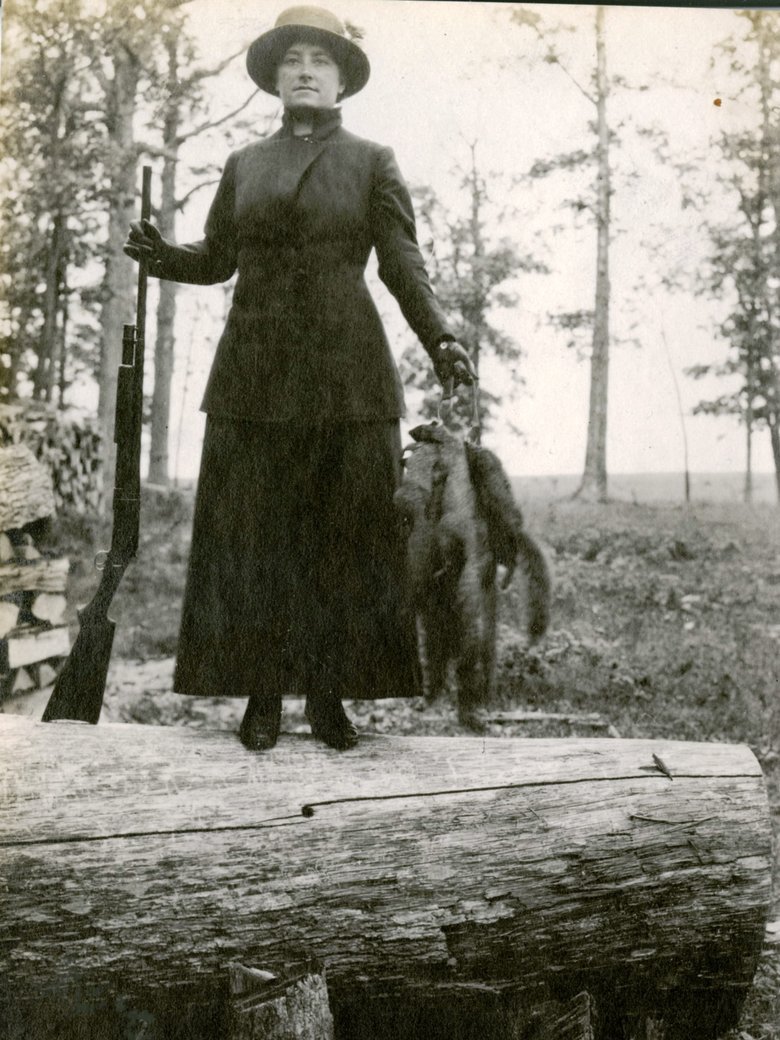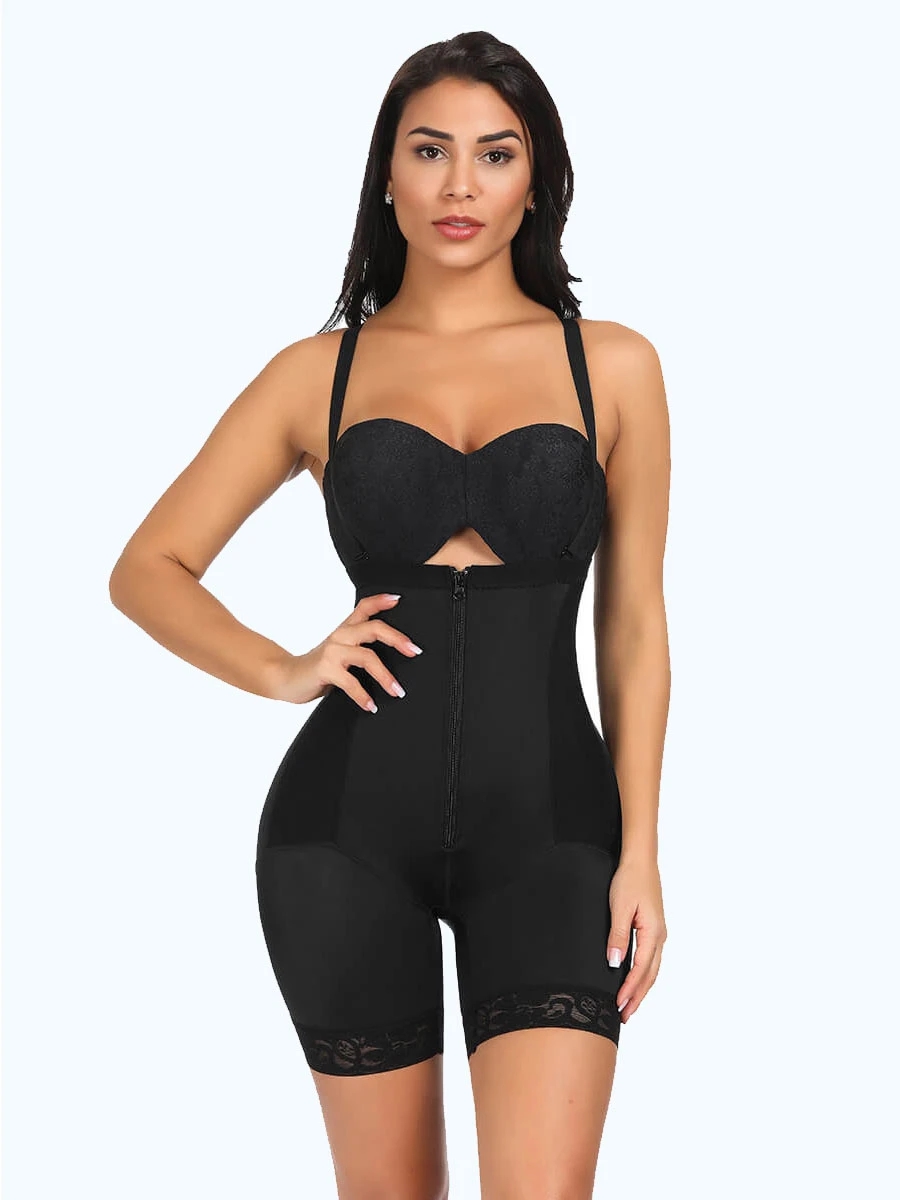 Even when hunting, women of the early 20th century wore corsets. (Courtesy of White River Valley M)
Even when hunting, women of the early 20th century wore corsets. (Courtesy of White River Valley M)
You don’t have to go a long way in history to understand how much underwear plays a role in women’s lives.
When Caitlyn Jenner first showed the world to the world on the cover of the Vanity Fair in July 2015, the former male Olympic athlete wore a satin corset.
“Suddenly you have breasts, and suddenly you have a waist,” said Patricia Cosgrove of the White River Valley Museum, a few days ago. “For her, a corset may be really helpful.”
Exhibition preview
‘Pain of beauty: revealing the history of women through underwear’
Until June 17; White River Valley Museum; 918 H Street S.E., Auburn; $5 for the elderly and children, $2 (253-288-7433 or wrvmuseum.org)
For others, it’s different from everyone else – one of the exhibitions at the Auburn Museum on June 17th entitled “The suffering of beauty: revealing the history of women through underwear” is obvious.
Most read life story
Cult’s favorite bakery, Milk Bar, comes to Seattle – one day
El Gaucho Seattle VIEW offers accommodation for guests.
I rode 14 miles to a breakfast sandwich named after Ruth Bader Ginsburg. This is worth it.
“Like sleeping on a nail bed”: What to do when the hotel mattress hype does not match reality
Itching spots when waking up? Look at what to eat at night
Unlimited digital access. $1 for 4 weeks.
It’s not just a corset and bullet bra, a pair of bloomers and a 60s-era gadget called The Fabulous Mark Eden Bust Developer. (“I bought one when I was 13 years old,” Cosgrove broke.) This exhibition shows how women strive to pursue fashion while staying healthy – both physically and culturally.
Cosgrove uses shoes, hats, purses, overalls and swimsuits as the backbone of women’s history. This exhibition is the third iteration of the exhibition “Dirty for Beauty”.
“There is a lot to say about the history of women in a painless way,” Cosgrove talks about, and she co-plans with the history professor of the Green River College, Michel Marshman. “I don’t want to fight anyone’s mind or alienate anyone.”
Because, this is an underwear hanging on the wall. There’s even a corset you can try to see how much it is wearing it and wearing a normal breath.
You can also learn the origin of the term “binding”. This means that the laces of their corsets are pulled tightly, they come straight together and force them to the back – making it a bit hard to breathe, and all the metal or whale bones are pressing in your middle.
“This is an introverted and extroverted control mechanism,” Cosgrove said. “A part of morality at the time.”
Being called a “loose woman” means that your corset is not tightly bound, easier to remove and breathe – heavy or otherwise.
“If it’s loose, who knows where you are going?” Cosgrove asked. “You are not under control.”
Then there is a pair of underpants that look like simple cotton pants from the front, but there is a gap between the waist and the ankle.
“There is no way to know if this is convenient or style, not control,” Cosgrove said.
Control can be explained in a number of ways: controlling the bladder, which is ideal for women who don’t have too many; or husbands who want easy access.
“At the time, women were almost all men’s thumbs,” Cosgrove said. “It’s conceivable that the backless has other uses, not hygiene.”
Innocent cotton trousers are also the result of fashion: “Women wear trousers, but women don’t wear them,” Marshman said. “So the trousers are closer to the trousers.”
Fortunately, this style did not last long.
By 1910, Amelia Bloomer had created bloomers – including crotch – ironically masculine. However, women still welcome them.
Then there is Teddy, the result of a rational dress movement, starting with women who are clearly enough for all these pulls and constraints. Fashion gave them loose cotton shirts and split skirts (covered with a piece of fabric) – just in time for women’s sports and labor strikes.
Designer Paul Poiret tried to slow down women’s speed through a game called The Hobble Skirt.
“When a woman strikes and protests, this dress will put a band around your knees, so your gait will be affected,” Cosgrove said. “It seems to be saying, ‘Oh, no, no, little lady.’
“This is a short-lived trend because it is stupid.”
The 1920s brought new freedoms to women, such as the right to vote and the establishment of a women’s electoral alliance. It also brings new music and bezel styles, which eliminates the hourglass shape and is more neutral. Women wear belts on their chests instead of corsets and rubber bands.
Marshman said that women are voting, smoking, going to college, using birth control measures and shortening long hair. Cosgrove said that in 1920, there were 4,000 beauty salons in the United States (if women cut their hair, they would go barb) ER). But by 1930, there were 40,000 women’s hair salons. The Second World War made women’s fashion more militaristic. jacket. skirt. Prague and hoses. In 1947, with the end of the war, women lost their jobs to returning soldiers, and Christian Dior brought a new look, “around sending women home,” Cosgrove said. They wore bullet bras, dresses and a string of pearls. “As long as the rights are reduced, the style usually highlights the female form,” Cosgrove said. “The bullet bra is like, ‘Hey! Look at my breasts!’ You have a lot of curves to continue. “Marshman says this look” is part of reshaping female characters and emphasizing family life. “The exhibition ended in 1970 – but This does not mean that women’s efforts to pursue physical perfection from the inside out have stopped. The thin lines are eliminated by the thong. Spanx smooth silhouette. Remove body hair by waxing. The skin is peeled and the lips and forehead are injected. It will never end. Cosgrove and Marshman have curated an accompanying male-centered exhibition that shows how men suffer for beauty. There is a case with a padded collar, a mannequin with a custom suit and tie, and a variety of razor razors. In the 1980s, Marshman said that due to the “pumping iron” star Arnold, the man began to struggle with the body image Schwarzenegger and the action man Sylvester Stallone. It is called “bigorexia” and is also called “muscle deformation.” To illustrate her point, Marshman placed two small Luke Skywalker figurines side by side in the showcase. The newer figurine has a tiny torso that leads to a V-shaped upper body. Even Halloween costumes now have built-in foam muscles. “Men’s body is becoming more and more objective,” Marshman said. “Because women’s bodies are always there.” And because underwear is so relevant, the exhibition opens up a lot of discussion about how far we go “we are coming – and we Is it far enough?” You need to understand history in order to make today’s decision for yourself,” she continued. “You make choices based on how you feel about being a woman.” Based on who you are and who you love. From the inside out. ”
